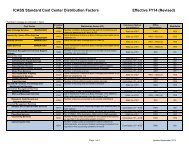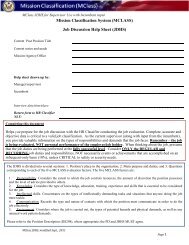Local Employment Policy Handbook - ICASS
Local Employment Policy Handbook - ICASS
Local Employment Policy Handbook - ICASS
You also want an ePaper? Increase the reach of your titles
YUMPU automatically turns print PDFs into web optimized ePapers that Google loves.
(USPSC, 3 FAM 8100) up to the five-year maximum before transitioning the position to the <strong>Local</strong><br />
<strong>Employment</strong> <strong>Policy</strong>. Therefore, Mission management had the option to transition positions currently<br />
encumbered by Ordinarily Resident US Citizens under a USPSC or Temporary (formerly called PIT)<br />
Appointment at either the:<br />
A. End of the current contract or appointment period (not to exceed the five-year maximum); or<br />
B. Next renewal or extension period.<br />
Transitioning to the <strong>Local</strong> <strong>Employment</strong> Process (2001-2008)<br />
If a current Ordinarily Resident US Citizen employee hired under a USPSC or Temporary Appointment<br />
voluntarily applies and is selected for any position recruited at the Mission, then HR terminates the<br />
current USPSC or Temporary Appointment and staffs the position under the <strong>Local</strong> <strong>Employment</strong> <strong>Policy</strong>.<br />
The employment mechanism is a PSA, and compensation is under the <strong>Local</strong> Compensation Plan at the<br />
FSN grade of the new position as CAJE evaluated. HR must observe the required break in service as<br />
stated in local labor law before hiring the individual under a PSA.<br />
Otherwise, Mission management decides when to transition a position currently encumbered by an<br />
Ordinarily Resident US Citizen under either a USPSC or Temporary Appointment. Under no<br />
circumstances may transitioning exceed the five-year maximum limit of the current USPSC or Temporary<br />
Appointment.<br />
There is no authority for exceptions beyond the five-year maximum limitation of the USPSC or<br />
Temporary Appointment. HR also may not “grandfather” the individual in the current position, allowing<br />
the individual to indefinitely maintain current compensation and benefits. (See Topic: Grandfathering)<br />
It’s important that HR review the expiration date of all USPSCs and Temporary Appointments currently<br />
encumbered by Ordinarily Resident US Citizens and advertise the positions three months prior to<br />
expiration using the Model Vacancy Announcement. The Model Vacancy Announcement is available on<br />
the HR/OE website under “Recruitment.”<br />
HR must transition all affected positions to the <strong>Local</strong> <strong>Employment</strong> <strong>Policy</strong> by December 31, 2008.<br />
Transitioning Process for the Mission<br />
Since this may be the first time HR establishes the position under the <strong>Local</strong> Compensation Plan, HR must<br />
open recruitment on the Vacancy Announcement (VA) to all sources (i.e., All Interested Applicants.)<br />
This will help determine the appropriate compensation rate in the local market for the skills set. HR may<br />
not restrict recruitment for positions transitioned to the <strong>Local</strong> <strong>Employment</strong> <strong>Policy</strong> to either:<br />
A. US Citizen EFMs only; or<br />
B. Current employees of the Mission only.




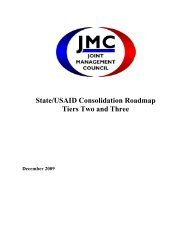
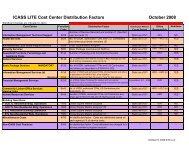

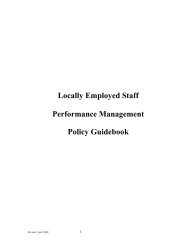
![Appendix D Reviewer Requirements Checklist GDB 2[1]. - ICASS](https://img.yumpu.com/37563692/1/190x245/appendix-d-reviewer-requirements-checklist-gdb-21-icass.jpg?quality=85)
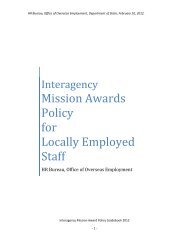
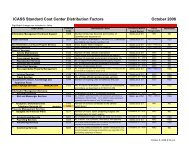

![GPAT for Web[1].ICASS GDB r2.31.00](https://img.yumpu.com/37563643/1/190x245/gpat-for-web1icass-gdb-r23100.jpg?quality=85)

